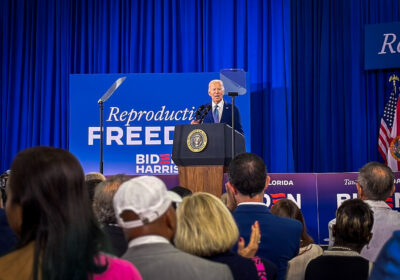E-cigarettes allow smoking sans smoke
A new product may give smokers an alternative to cigarettes that is almost like the real thing.
The device, first designed in China, looks like a traditional cigarette. Its thin, white cylinder houses a lithium battery and the faux tan filter contains nicotine, the addictive in cigarettes. The electronic cigarette — or e-cigarette — does not contain any tar, carcinogens or other cancer-causing products found in regular cigarettes.
Like a real cigarette, it produces smoke, but without the second-hand health dangers for those nearby. Once charged, the nicotine transforms into an odorless, smoke-like vapor.
A recent study by the American Lung Association showed that roughly one in five college students smoke cigarettes. The electronic cigarette could offer them a healthier way of smoking.
Dr. Abigail Saneholtz, coordinator of the Center for Addictions and Substance Abuse at USF, said the physical hand-to-mouth motion of the e-cigarettes could draw in student smokers.
Over the past few months, Fifty-One electronic cigarettes have become available at the Citrus, Countryside and Westshore shopping malls by Smoke Anywhere USA, Inc. Smoke Anywhere created these cigarettes in 2005.
Jeff Holman, managing owner of the company, said there are certain advantages to the product, especially for college students.
Its greatest benefit, he said, is convenience. Instead of stepping outside to get their nicotine fix, students can smoke where they live because it doesn’t give off an offensive odor. In fact, smokers can choose a flavored cartridge — chocolate, vanilla or coffee, for example — that makes the vapor to smell sweet.
Holman said the Fifty-One satisfies the oral fixation that comes with smoking cigarettes, unlike the nicotine patch or gum.
“Basically, we’re fulfilling the entire smoking experience without all the elements found in tobacco cigarettes,” he said.
Saneholtz, however, warns students against trying the device because it lacks research, clinical trials, and Food and Drug Administration (FDA) approval.
Holman said Smoke Anywhere has conducted several tests for the device but it isn’t FDA-approved because they don’t market the device as an actual cigarette.
“We are just promoting a healthier alternative for smokers,” he said.
Lillian Dean, a senior environmental science major and smoker, said she is hesitant to try the Fifty-One because there is no FDA approval, but would consider it if it was cheaper. She smokes about one pack a day, she said.
Fifty-One’s electronic lithium battery is $49.95. Cartridges — where the nicotine is held — are$14.95 for a pack of five, which is about the same price as a carton of cigarettes. The charger, which is $19.95, is a one-time investment, but the cartridges must be re-purchased when empty. The amount of nicotine inside the cartridges varies from zero to eight milligrams.
If a pack-a-day smoker like Dean, who spends about $3 to $5 a pack, bought the electronic cigarette, it would take approximately two days to use up the cartridge.
No matter the amount of milligrams the smoker chooses, the price of the Fifty-One cartridge is the same. The product’s Web site, smoke51.com, suggests buying cartridges in bulk to help reduce costs.
Nonsmoker Erik Scott, a senior majoring in biomedical science, said even though the Fifty-One product seems more expensive than real cigarettes, it is worth it for smokers to try.
“Everyone wants to maximize their time alive,” Scott said. “(Smokers) are saving in the long-run because they’re getting longer to live.”






